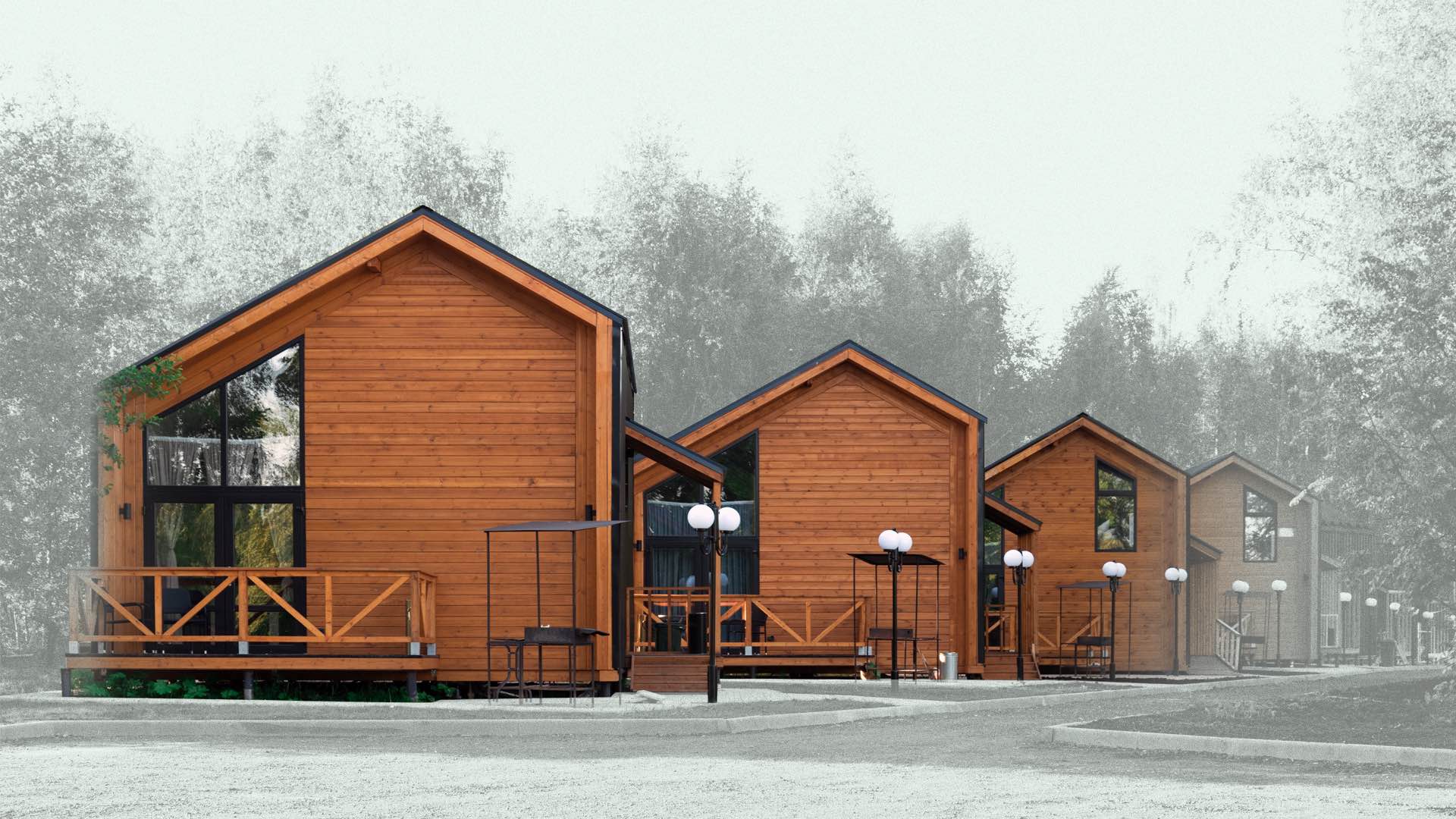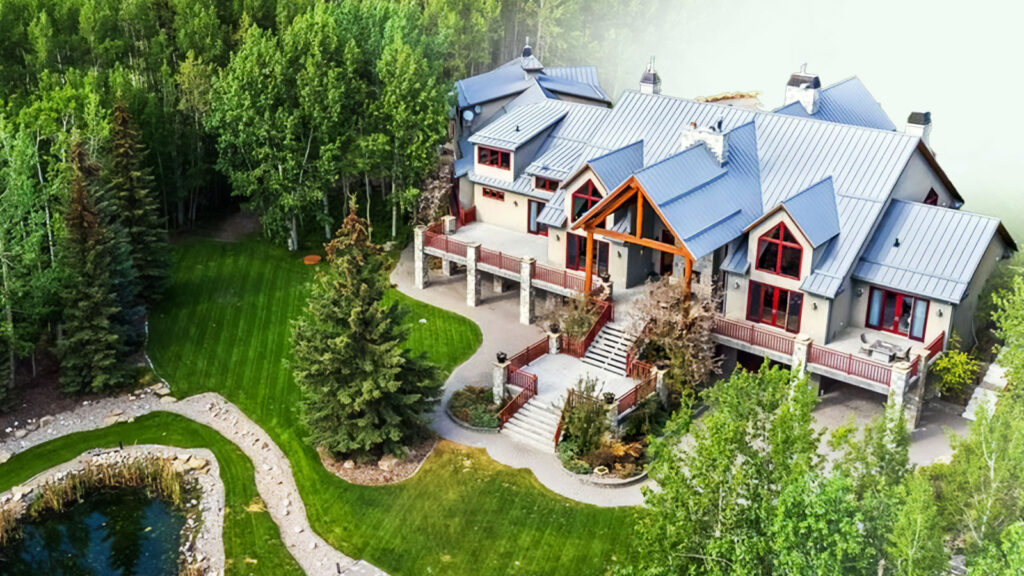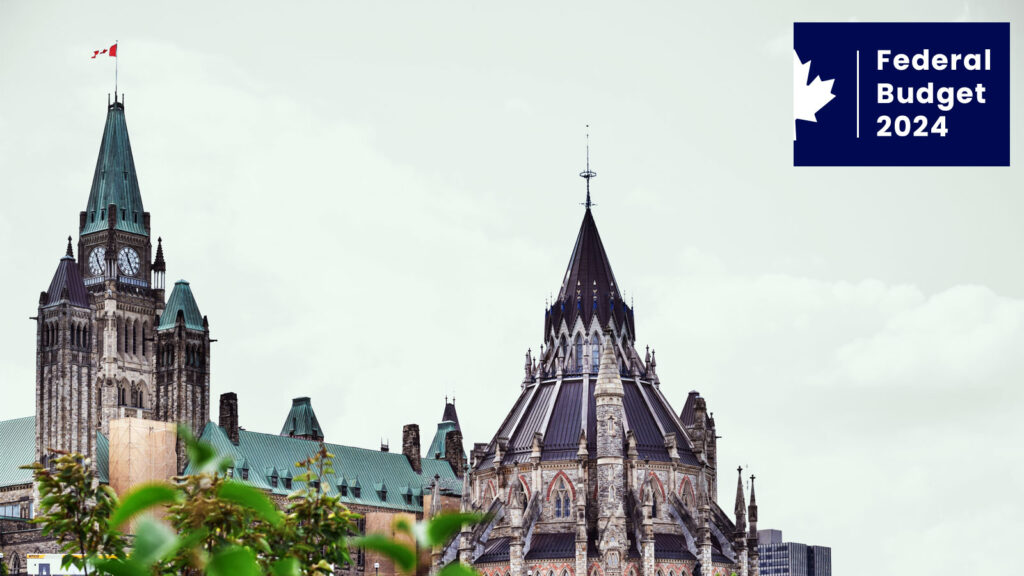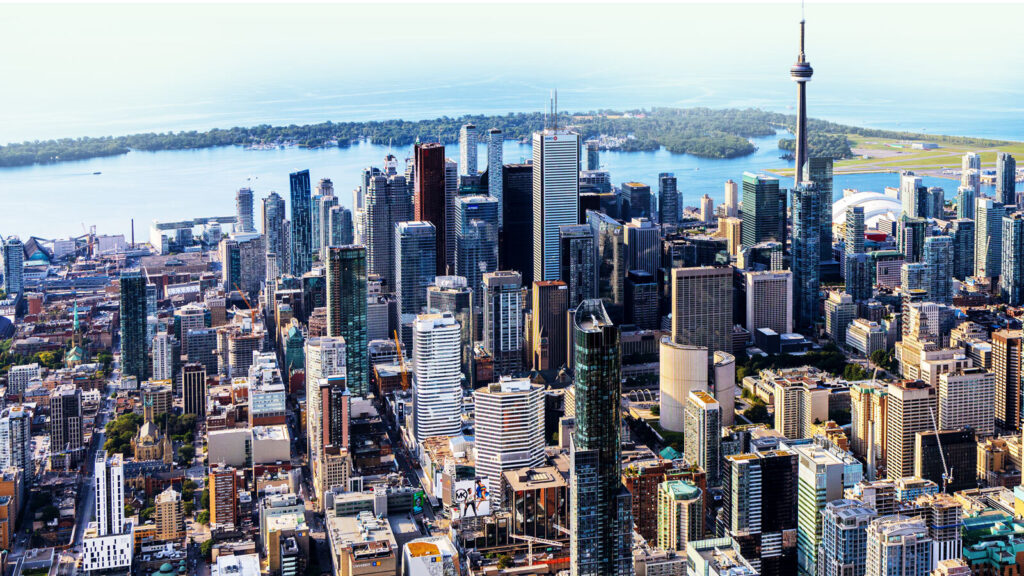Should You Buy an Eco-Friendly Home?
Before you commit to purchasing a green home, check out these pros and cons.
By Emily Southey | 7 minute read

While there is no universally recognized definition, a green home is one that is environmentally sustainable. This usually means that it is built using long-lasting, environmentally friendly, non-toxic materials and is designed to reduce indoor air pollution, leverage the sun, and employ low-energy heating and cooling solutions.
–
More specifically, some experts believe that an eco-friendly home should embody the following five principles:
- Optimize the sun, either through active or passive solar energy;
- Improve indoor air quality;
- Be committed to the responsible use of land;
- Consist of durable, moisture-resistant materials; and
- Use the planet’s natural resources wisely.
Common Eco-Friendly House Features
To further define what an eco-friendly house is, we outline some of the most common design features of eco-friendly homes in Canada.
–
Energy-Efficient Design
First, eco-friendly homes tend to feature energy-efficient designs. This in part is recognizing that the orientation of a property, along with its features, can impact how much energy it consumes (namely how much artificial lighting is required). Homes that are highly energy efficient aim to use nature’s energy as much as possible. For example, a green home may have south-facing windows to make use of passive solar heating or overhangs to increase shade and keep a home cool in the summer.
Sustainable Building Materials
Sustainable building materials are another key component of eco-friendly homes. This usually means using raw or recycled materials that both form and insulate the home. Natural, non-toxic materials are key, as are those that are biodegradable. For example, recycled steel, cob, reclaimed wood, cork, bamboo, recycled plastic, hempcrete (a mix of sand, hemp fibres, and lime), and AshCrete (an eco-friendly concrete alternative that is made from 97% recycled materials) are all considered sustainable building materials. Other natural materials used for insulation or other needs inside the home, like vegetable cellulose, soy-based paint, and corn-sourced carpeting are also considered to be viable, environmentally friendly alternatives to traditional materials. In general, the materials used to build an eco-friendly home are known to emit fewer greenhouse gases during composition and be more cost-effective.
Low-Pressure Water Fixtures
Energy-saving, low-pressure water fixtures are another common design feature in green homes. Examples of such fixtures include “low-flow” toilets, shower heads, or sink faucets. These are becoming commonplace in all homes in Canada. They are believed to perform as effectively as outdated fixtures and have much lower operating costs — a win-win for all!
“Sustainable building materials are another key component of eco-friendly homes. This usually means using raw or recycled materials that both form and insulate the home.”
Low-Energy Lighting
In Canada, traditional incandescent light bulbs are already being phased out in favour of energy-efficient alternatives. Such alternatives include halogen bulbs, compact fluorescent bulbs (CFLs), and light-emitting diodes (LEDs), all of which not only outperform incandescents but use far less energy. For example, halogens are known to use 28% less energy when compared to incandescents and CFLs boast a reduced energy consumption of 75%. Meanwhile, LEDs are the most energy-efficient of all, lasting roughly 25 times longer than the standard incandescent bulb. For this reason, the light bulbs you find throughout eco-friendly homes, whether in lamps, ceilings, or uplights, are likely to be low-energy alternatives, like halogens, CFLs, and LEDs.
Harnessing of Solar Energy
Many eco-friendly homes are dedicated to the harnessing of solar energy. The most obvious way to do this is through the use of solar panels, which harvest and store thermal energy, even in cold climates like Canada. Solar panels consist of premade silicone or telluride panels that are glazed and installed outside homes, most often on rooftops. The slates are then angled in a way that allows them to either divert the hot summer sun or leverage the winter sun’s natural heat to effectively control the temperature of the home.
Energy-Saving Home Appliances
One final feature of many eco-friendly homes is energy-saving appliances. Nowadays, manufacturers all over the world have started producing energy-efficient alternatives to everyday home appliances, including washers, dryers, ovens, refrigerators, dishwashers, and more. Pay close attention to the SEER rating of an appliance or look for those that have been certified by Energy Star. Installing energy-efficient appliances in a home can significantly reduce your environmental footprint and your utility bill, which is why they are commonplace in eco-friendly homes.
We put the real back in real estate.
Join Wahi today and find out how easy it is to get real estate in Canada.
The Pros and Cons of Eco-Friendly Homes
Still not sure if an eco-friendly home is for you? Read through the pros and cons below to help you make your decision.
The Pros of Green Homes
- Long-term cost savings: The first pro of eco-friendly homes is that they can result in major cost savings. When you think about it, going green is incredibly cost-effective. Installing features like solar panels, rainwater harvesting systems, LED light bulbs, energy-efficient appliances, and more can drastically reduce your utility bills. Plus, in some parts of Canada, homeowners who invest in eco-friendly alternatives may be eligible for all kinds of government rebates.
- Low maintenance: Another benefit of eco-friendly homes is that they typically require less maintenance than traditional homes.
- Superior air quality: Since many eco-friendly homes are designed to reduce indoor air pollution, living in such a home results in better air quality. Not only can this make spending time in your home more comfortable, but it can also help people with allergies and respiratory diseases.
- Great return on investment: Eco-friendly homes are only growing in popularity, which means demand for them is rising. As such, by installing environmentally friendly features on your home, such as solar panels, your property value might go up significantly, allowing you to benefit from a major return on investment upon selling. Plus, the installation of certain energy systems like solar panels may increase the lifespan of a building, making it even more valuable.
- Positive environmental impact: Another major pro of eco-friendly homes is their positive impact on the environment. There is no denying that the Earth is in the midst of an environmental crisis. People must take action to save it, and one way to do so is by adopting eco-friendly features in their homes. Therefore, homes that are built using natural or recycled materials and clean energy sources can dramatically reduce pollution and preserve the Earth’s natural resources.
- It’s a matter of when not if: The reality is that eco-friendly homes are the way of the future. With the current state of the environment, governments are acting fast to save the planet, and that means increased regulations in all areas of life to curb greenhouse gas emissions. Therefore, deciding to make your home more eco-friendly is likely to be the only choice in the future, when old, outdated, and energy-sucking alternatives are no longer available.
The Cons of Green Homes
- Upfront costs: The first con of green homes is the high upfront costs. Although energy-efficient homes can save you money in the long run, they can be expensive at the beginning, especially if you are making major changes, such as installing solar panels on your home.
- Material risks: Another con of eco-friendly homes is the risks that come with certain building materials. Depending on the materials you choose, especially if you choose new materials or ones that have only recently started to be repurposed for home use, there could be potential safety issues. For example, some construction materials may not have been adequately tested, which could lead to problems (or even a lawsuit) in the future. Therefore, you will need to make sure that you are using reputable, tested construction materials for your eco-friendly home.
- Difficulty obtaining a mortgage or permit: Despite the fact that eco-friendly homes are increasing in popularity, some designs are so new and innovative that they may seem risky to mortgage lenders. For this reason, obtaining a mortgage or even a government permit to buy and build the home you want might be challenging.
- Eco-friendly roofs can be complicated to build: There is one part of eco-friendly homes that presents several challenges: the roof. Environmentally friendly roofs consist of several layers, which makes them heavier than traditional roofs. While these layers offer many benefits, such as better drainage, water storage, insulation, waterproofing, and vegetation, they can also be difficult and expensive to build. The weight of the roof may also pose a problem for homeowners who are wishing to upgrade the roof on an existing home.
- Lengthy construction process: If you plan to build an eco-friendly home from scratch, it’s important to understand just how long this will take. Building any home will be a lengthy process, but building an eco-friendly one might be even more so. Eco-friendly construction materials may be harder to find and may have to be shipped from faraway places. If time is of the essence, an eco-friendly home may not be the way to go.
Frequently Asked Questions
What are eco-friendly houses made of?
Eco-friendly houses can be made of a wide range of materials. However unlike your average home, what these materials have in common is that they are environmentally friendly (that is, they do not harm the environment). Popular eco-friendly building materials may include recycled steel, cob, reclaimed wood, cork, bamboo, recycled plastic, hempcrete (a mix of sand, hemp fibres, and lime), and AshCrete (an eco-friendly concrete alternative that is made from 97% recycled materials).
What makes a good eco-friendly house?
A good eco-friendly home is one that has a significantly reduced impact on the environment. This usually means that it has been built using natural or recycled materials, such as bamboo, recycled steel, or reclaimed wood and that it incorporates energy-efficient design principles like solar panels, rainwater harvesting systems, south-facing windows, low-energy lighting, low-flow water fixtures, and energy-saving appliances, among others.
How much will an eco-friendly house cost per month?
The cost of an eco-friendly home varies considerably depending on many factors, such as where it is located, its size, and the specific features the homeowner wants it to include. However, the cost of building an eco-friendly home is estimated at between $250 and $300 per square foot. For a better idea of how much your dream eco-friendly home will cost, contact an architect or contractor near you.
Emily Southey
Wahi Writer
Become a Real
Estate Know-It-All
Get the weekly email that will give you everything you need to be a real estate rockstar. Stay informed and get so in the know.
Yes, I want to get the latest real estate news, insights, home value
estimates emailed to my inbox. I can unsubscribe at any time.






